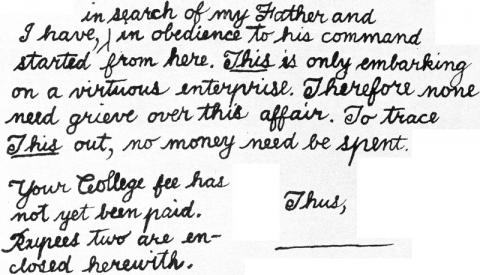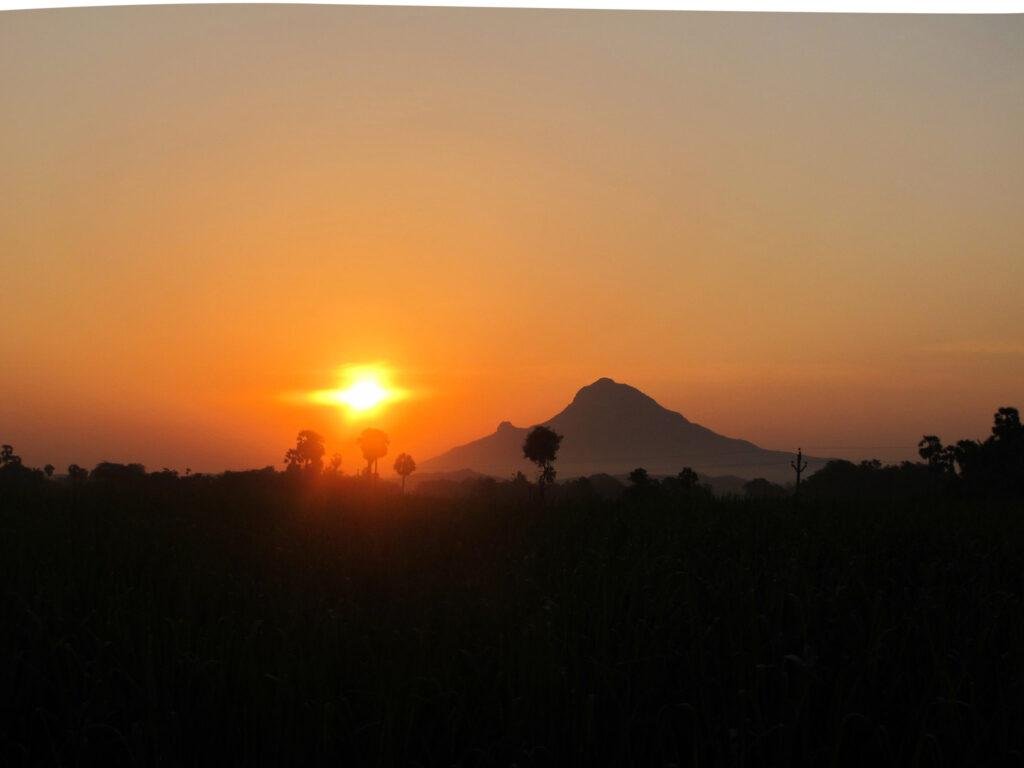
His parents named him Venkataraman. His elder brother was Nagaswami, his younger brother was Nagasundaram, and Alarmelu was their sister. He grew up happily with his three siblings. Venkataraman followed primary education in his birth town Tiruchuzhi and Dindukkal.
When he was twelve, his farther passed away. As his mother was unable to take care of all her children, Venkataram and his elder brother were offered to live at their paternal uncle’s house to continue their higher education at the American Mission High School in Madurai, which is famous for the Meenakshi Temple.
Sometimes his friends played tricks on him when he was asleep. They would carry him out of his bed and outside, made loud noises but failed in waking him up through any effort. The next day he would not even remember what has happened to his body.
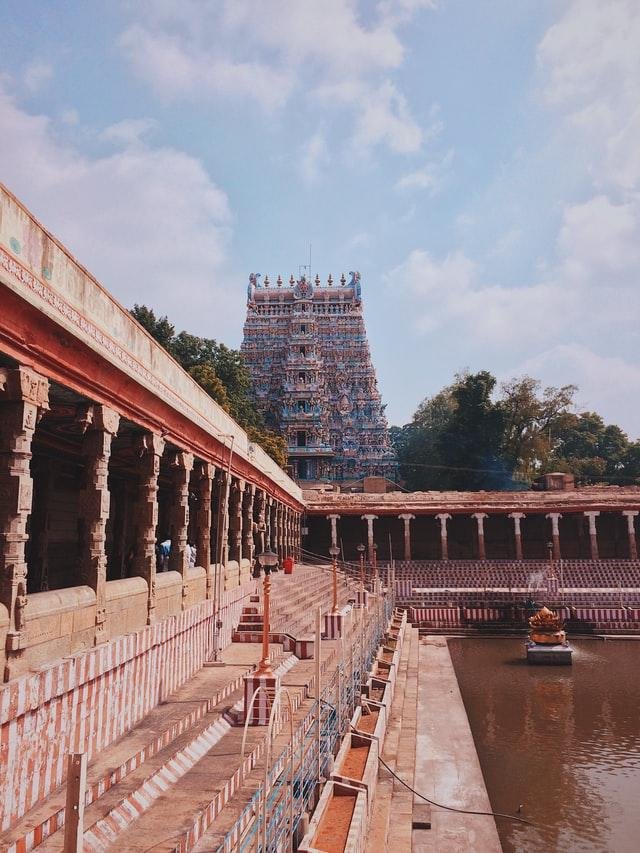
Meenakshi Temple, Madurai, where Sri Ramana spend his youth
At the Age of 16, Venkataraman happened to read ‘Periyapuranam’, a book about the lives of 63 saints who lived in South India. He was deeply touched by the saints who lived their life in joyous devotion to god, serving and singing for him.
In the same year, he heard the Name ‘Arunachala’ for the first time . As an elderly relative spoke in praise of the holy mountain, Venkataraman’s heart was filled with joy and wonder. The Name resonated deeply within, connected with a feeling of home, and the young boy was stunned that this feeling, this Name existed as a actual place on this earth.
Both of these events might have awoken something in Venkataraman, activated a seed which blossomed up later in the year.
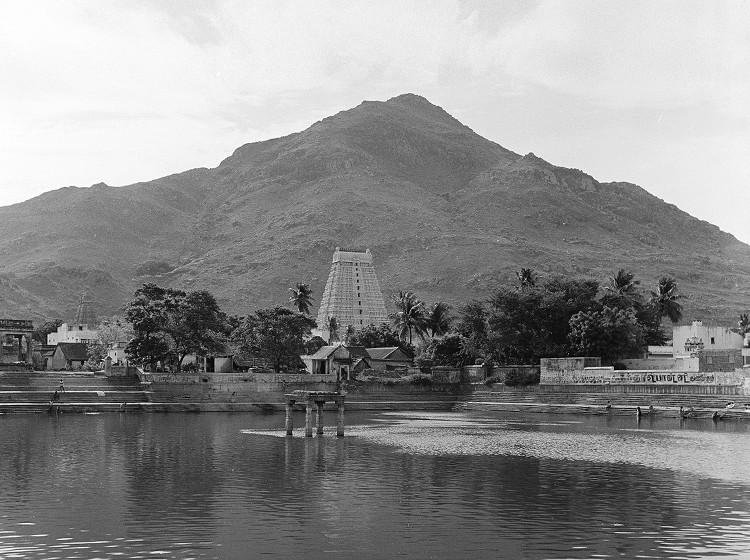
Arunachala Mountain, Tiruvannamalai
The Great Divine Change
This true realisation of the Self (atma-jnana) lit up in him as a direct experience, and the fear of death that had risen in him disappeared once and for all. From that time onwards, this state of self-awareness constantly shone in Him as His natural state, unbound by time and space and without increase or decrease. From that moment on the Divine worked through him to remove the suffering of all beings.
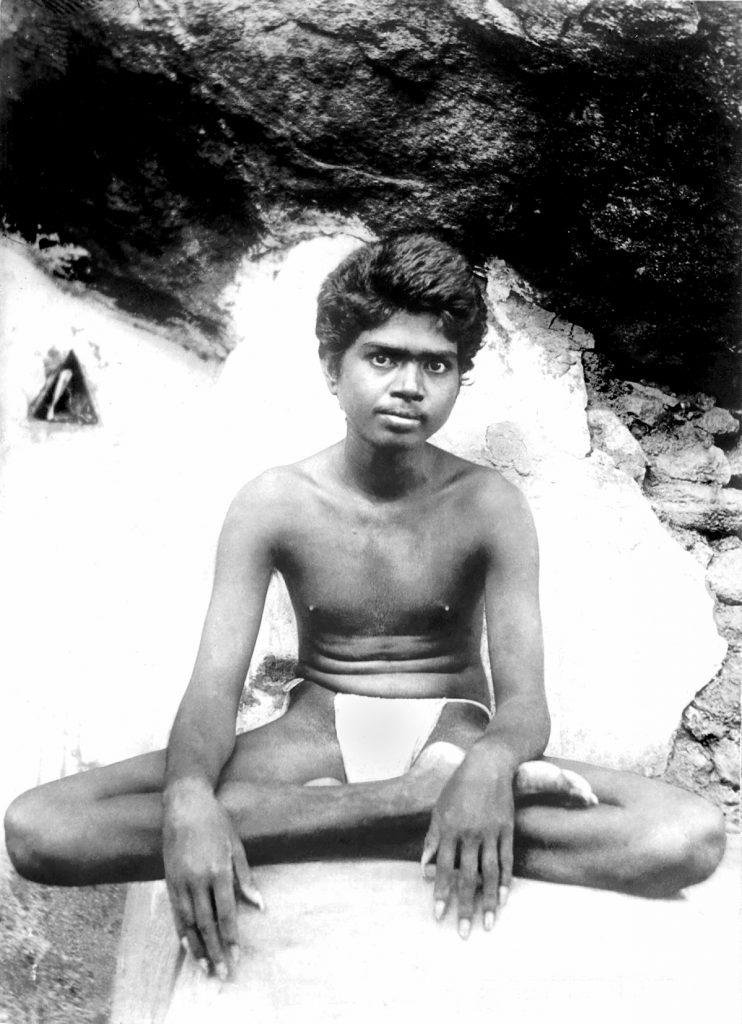
Sri Ramana Maharshi
Transformation after the awakening
The desire to play, which once appealed to him so much, also disappeared completely from his mind. Love and attachment to friends and relatives also dwindled, as did interest in food and worldly activities. He, who had always fought for right in the past, now became indifferent and no longer reacted in any way to any kind of wrong or right. His earlier way of reacting with harsh blows when someone scolded Him changed, and now a sweet smile of forgiveness and indifference appeared on His face in response! What a wonderful change! Self-awareness transformed Him into a perfect Sadhu. Love, non-violence, patience, compassion, forgiveness, control over the senses, humility, fearlessness – all these divine qualities settled naturally and completely in Him, not as a result of practice, but as a result of self-awareness. For Him, a life of worldly activities was now meaningless, dry and unreal, just as a dream is useless, empty and unreal to the one who has awakened from it.
He was often seen sitting in solitude, absorbed and wallowing in himself. In truth, the former Venkataraman was no more, and Bhagavan Ramana alone shone! An incident that gave a hint of this self-absorption even at the age of twelve occurred in Dindukkal when Venkataraman was studying there, but those who were around Him at that time did not realise its significance and preciousness. One day, when His relatives had gone out, Venkataraman was lying on His bed after locking the house from inside. When they returned, though they knocked on the door and called Him loudly, the door was not opened. After finding another way to enter the house, they again tried to wake Him from His deep sleep by shaking, rolling and beating His body violently. But all in vain, Venkataraman would not wake up! After some time, however, He woke up of His own accord.
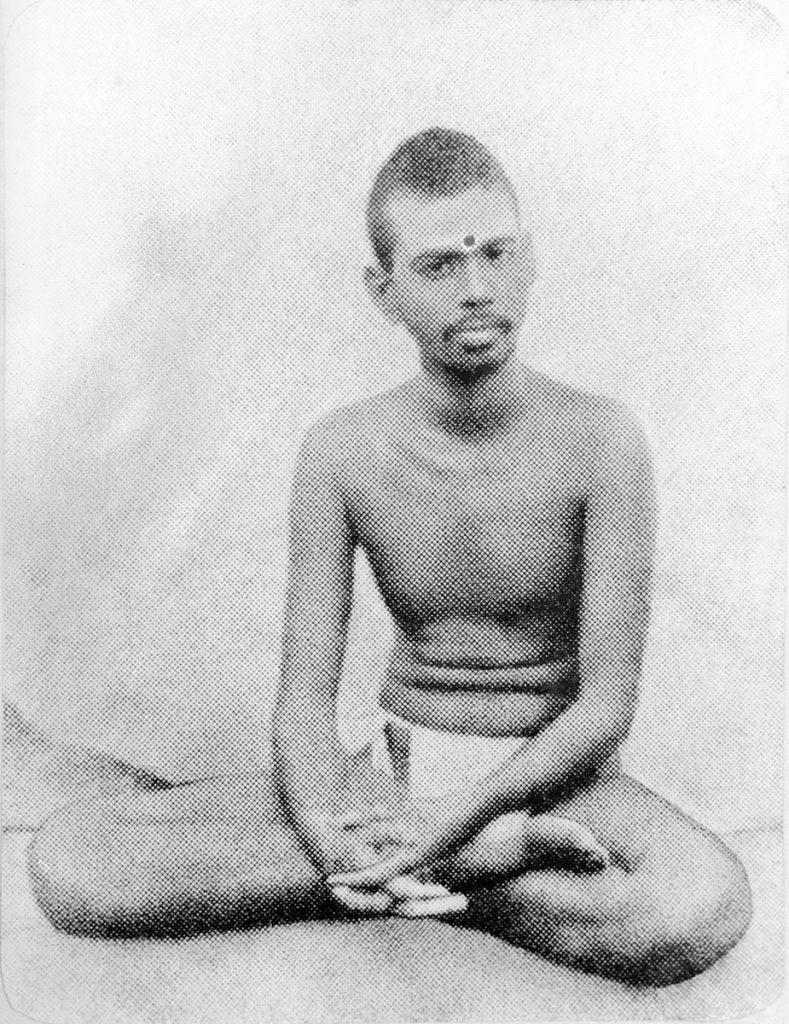
Setting off for Arunachala
Since Venkataraman had lost all interest in his studies, his teacher began to punish him. Even Nagaswami, His elder brother, became angry when he noticed the great change in Him. Whenever he saw Him sitting in self-absorption, he would taunt Him, “What a great sage, 5 Kumbhakarnan was a Rakshasa in the Ramayana who was known for his long sleep of six months. 6 I.e. in previous births (see ‘The Path of Sri Ramana – Part Two’, Appendix 2, ‘The Summary of Acts Birth by Birth’). 9 a yogiswara!”; but Venkataraman, who had the clear knowledge of Reality and was thereby unshakable, did not care for all this. One day, his teacher gave him a requirement to write a lesson in English grammar three times, which he had not learnt. The next day, it was a Saturday, August 29, 1896, Sri Ramana had already written the assignment twice when he felt dejected towards this useless work. He threw away the pencil and the notebook, sat up and closed his eyes in self-absorption (nishtha).
Nagaswami, who was sitting nearby, was saddened to see this. Intending to correct his brother, he exclaimed with pity and anger, “Yes, why all this for one like this?”. To him, who would normally have been indifferent to such a remark, the words seemed to mean a lot on this occasion. He thought, “Yes, what he says is true. What have I to do here now and with these things? Nothing!”. He immediately decided to leave the house. All of a sudden, the memory of Arunachalam flashed spontaneously in his mind. He decided, “Yes, Arunachalam is the only place where I can go!”
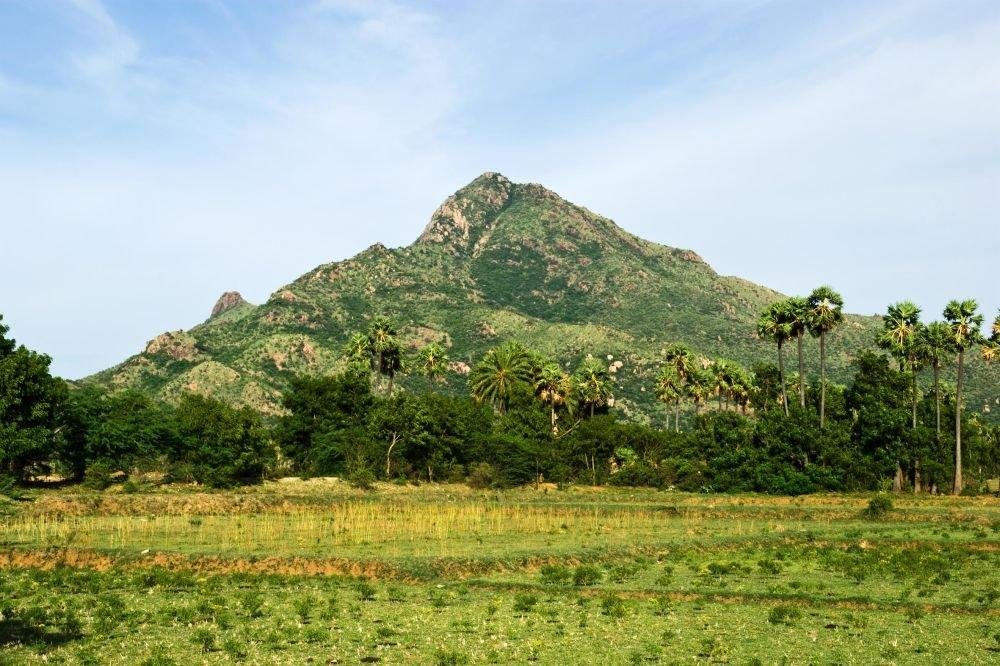
When Venkataraman noticed that he had nothing to do anymore with the environment in which he lived, a sudden flash of Arunachala appeared and he knew he had to leave for the place which felt like home to his heart.
